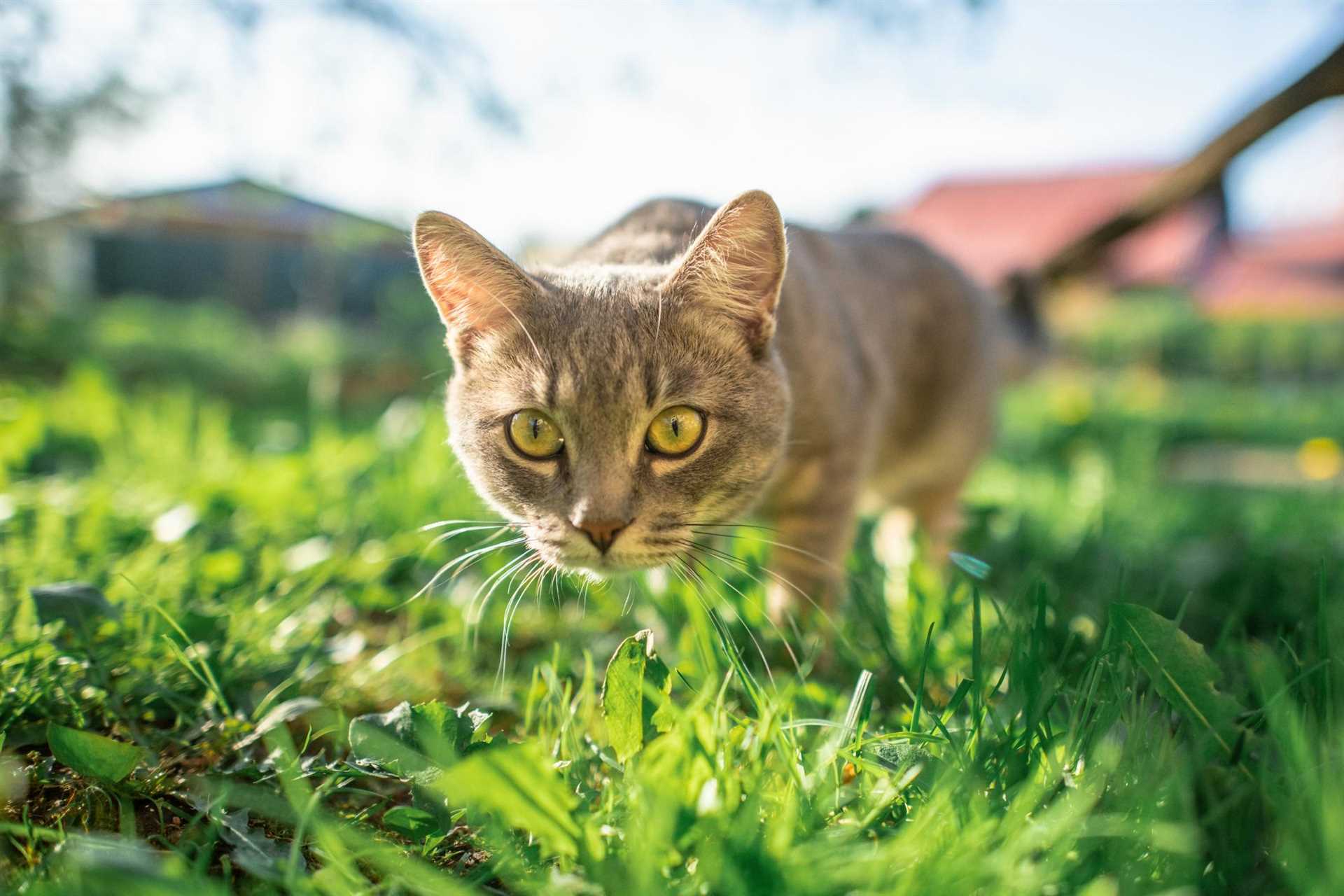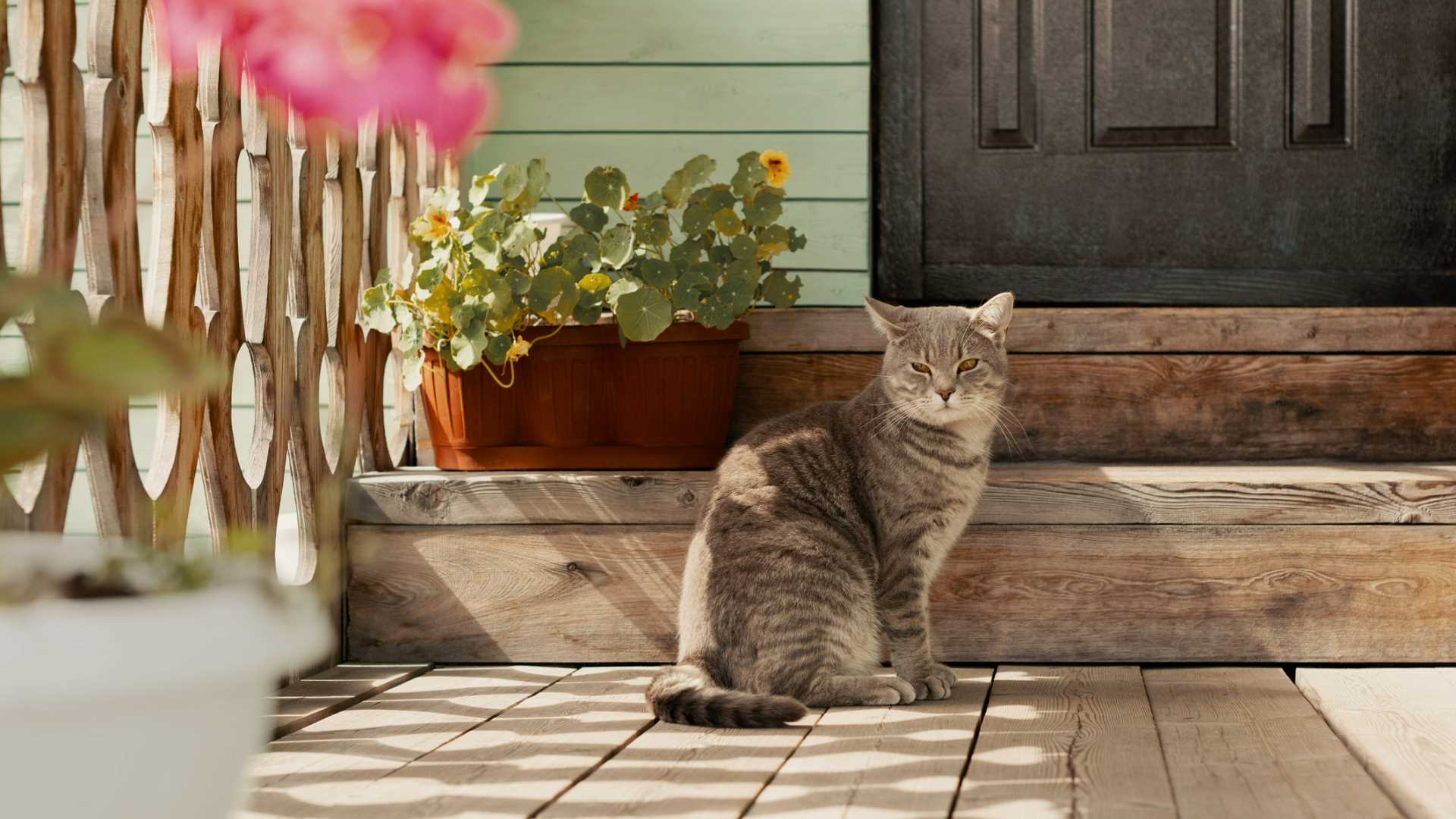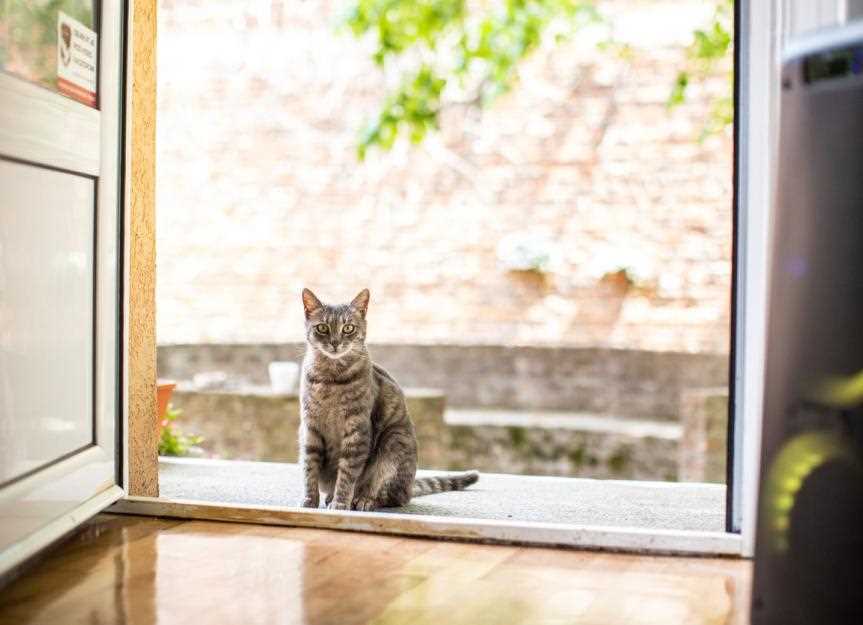

As a Scottish Fold with a curious spirit, I often ponder the distance my fellow felines can traverse to return to familiar grounds. Research indicates that a domestic cat might successfully navigate up to five miles away from home, leveraging an acute sense of smell and exceptional hearing.
My adventures have shown me that scent trails play a pivotal role in this remarkable ability. A cat’s olfactory system contains around 50 to 80 million scent receptors, allowing us to detect smells far beyond what humans can perceive. This keen sense helps us map our surroundings and retrace our steps with impressive precision.
Additionally, environmental cues, such as landmarks and sounds, significantly aid in orientation. Many cats rely on these familiar signals, making it easier to return to their territory. If you ever lose sight of your furry friend, consider leaving out familiar scents or items to guide them back to you.
Understanding these remarkable navigation skills can provide peace of mind. It’s always wise to create a safe environment for your pet, ensuring they feel secure and less inclined to wander too far.
Factors Influencing a Cat’s Homing Ability

Location familiarity plays a significant role in my ability to return to familiar territory. The more time I spend exploring my surroundings, the better I can navigate my way back. Landmarks, such as trees or buildings, serve as helpful reference points. If I’ve previously roamed an area, I’m more likely to remember it when it’s time to return.
Sense of Smell

My olfactory capabilities are remarkable. Cats like me possess an incredible sense of smell, which helps in recognizing scents that are familiar. This ability to detect pheromones and other scents allows me to track my home environment, even if I wander far away. When I catch a whiff of my territory, it guides me back. If you’re dealing with odors in your home, you might find it useful to learn how to eliminate cat pee smell from shoes so that your space remains inviting.
Environmental Factors

Weather conditions can impact my journey. Rain, snow, or extreme heat can disorient me and make it harder to follow scent trails. Additionally, urban environments may pose challenges due to traffic and noise, which can be distracting. Safe and quiet areas provide the best conditions for my navigation skills to shine.
Finally, my age and health affect my homing instincts. Younger felines often have more energy and stamina, enabling longer explorations. Meanwhile, health issues can limit my ability to traverse long distances or navigate effectively. Understanding these factors helps my human companions support me better. If you’re curious about my work-life balance and what I earn, check out how much I get paid part-time!
Real-Life Cases of Felines Finding Their Abodes

Once, a friend of mine, a fluffy tabby named Mittens, went missing for a week. She was found 3 miles away, curled up in a neighbor’s garage. It turns out she had been chasing a butterfly and lost her bearings. Her human put up flyers and posted on social media, which caught the attention of the neighbor who recognized her.
Another story involves a brave little calico named Patches. She wandered off during a family picnic and traveled an impressive 5 miles back to her home. Her owner had left food out, which likely helped Patches navigate back, drawn by familiar scents wafting through the air.
Then there’s the curious case of an orange tabby named Leo. After being lost for 2 months, he returned home, having traversed nearly 10 miles. His owner had never given up hope, continuously searching and sharing updates online. Leo’s incredible journey inspired many in our community.
One more tale involves a gray cat named Whiskers. After being lost for 4 weeks, he reappeared on his doorstep. His humans had placed his favorite blanket outside to lure him back. Whiskers must have picked up on that comforting scent, guiding him through the neighborhood.
These stories showcase the remarkable ability of these creatures. Many believe it’s a mix of instinct, memory, and scent that leads them back. Each case is unique, but the common thread is the unyielding bond between animals and their humans.
Practical Tips for Helping Your Cat Return Home
First, ensure your little companion always wears a collar with an ID tag. Include your name, phone number, and address. This simple addition significantly increases the chances of a safe return if they wander off.
Utilize microchipping for a permanent solution. A microchip provides a reliable method of identification that cannot be lost or removed, making it easier for shelters or vets to contact you if your furry friend is found.
Establish Familiarity
Regularly walk your pet around the neighborhood. This helps them recognize their surroundings, making it easier for them to navigate back. Familiar scents and landmarks create a mental map that can be beneficial if they stray away.
Consider placing a few familiar items, like blankets or toys, outside your home. The scents can provide comfort and guidance, helping them orient themselves in the right direction.
Utilize Technology
Invest in a GPS tracker designed for pets. These devices allow you to monitor their location in real-time through an app, giving peace of mind and a quick way to locate them if they wander too far.
Share your contact details with neighbors. Creating a network increases the chances of your pet being spotted and reported quickly. A community watch can be effective in ensuring their safety.
As a Scottish Fold with a curious spirit, I often ponder the distance my fellow felines can traverse to return to familiar grounds. Research indicates that a domestic cat might successfully navigate up to five miles away from home, leveraging an acute sense of smell and exceptional hearing.
My adventures have shown me that scent trails play a pivotal role in this remarkable ability. A cat’s olfactory system contains around 50 to 80 million scent receptors, allowing us to detect smells far beyond what humans can perceive. This keen sense helps us map our surroundings and retrace our steps with impressive precision.
Additionally, environmental cues, such as landmarks and sounds, significantly aid in orientation. Many cats rely on these familiar signals, making it easier to return to their territory. If you ever lose sight of your furry friend, consider leaving out familiar scents or items to guide them back to you.
Understanding these remarkable navigation skills can provide peace of mind. It’s always wise to create a safe environment for your pet, ensuring they feel secure and less inclined to wander too far.
Factors Influencing a Cat’s Homing Ability

Location familiarity plays a significant role in my ability to return to familiar territory. The more time I spend exploring my surroundings, the better I can navigate my way back. Landmarks, such as trees or buildings, serve as helpful reference points. If I’ve previously roamed an area, I’m more likely to remember it when it’s time to return.
Sense of Smell

My olfactory capabilities are remarkable. Cats like me possess an incredible sense of smell, which helps in recognizing scents that are familiar. This ability to detect pheromones and other scents allows me to track my home environment, even if I wander far away. When I catch a whiff of my territory, it guides me back. If you’re dealing with odors in your home, you might find it useful to learn how to eliminate cat pee smell from shoes so that your space remains inviting.
Environmental Factors

Weather conditions can impact my journey. Rain, snow, or extreme heat can disorient me and make it harder to follow scent trails. Additionally, urban environments may pose challenges due to traffic and noise, which can be distracting. Safe and quiet areas provide the best conditions for my navigation skills to shine.
Finally, my age and health affect my homing instincts. Younger felines often have more energy and stamina, enabling longer explorations. Meanwhile, health issues can limit my ability to traverse long distances or navigate effectively. Understanding these factors helps my human companions support me better. If you’re curious about my work-life balance and what I earn, check out how much I get paid part-time!
Real-Life Cases of Felines Finding Their Abodes

Once, a friend of mine, a fluffy tabby named Mittens, went missing for a week. She was found 3 miles away, curled up in a neighbor’s garage. It turns out she had been chasing a butterfly and lost her bearings. Her human put up flyers and posted on social media, which caught the attention of the neighbor who recognized her.
Another story involves a brave little calico named Patches. She wandered off during a family picnic and traveled an impressive 5 miles back to her home. Her owner had left food out, which likely helped Patches navigate back, drawn by familiar scents wafting through the air.
Then there’s the curious case of an orange tabby named Leo. After being lost for 2 months, he returned home, having traversed nearly 10 miles. His owner had never given up hope, continuously searching and sharing updates online. Leo’s incredible journey inspired many in our community.
One more tale involves a gray cat named Whiskers. After being lost for 4 weeks, he reappeared on his doorstep. His humans had placed his favorite blanket outside to lure him back. Whiskers must have picked up on that comforting scent, guiding him through the neighborhood.
These stories showcase the remarkable ability of these creatures. Many believe it’s a mix of instinct, memory, and scent that leads them back. Each case is unique, but the common thread is the unyielding bond between animals and their humans.
Practical Tips for Helping Your Cat Return Home
First, ensure your little companion always wears a collar with an ID tag. Include your name, phone number, and address. This simple addition significantly increases the chances of a safe return if they wander off.
Utilize microchipping for a permanent solution. A microchip provides a reliable method of identification that cannot be lost or removed, making it easier for shelters or vets to contact you if your furry friend is found.
Establish Familiarity
Regularly walk your pet around the neighborhood. This helps them recognize their surroundings, making it easier for them to navigate back. Familiar scents and landmarks create a mental map that can be beneficial if they stray away.
Consider placing a few familiar items, like blankets or toys, outside your home. The scents can provide comfort and guidance, helping them orient themselves in the right direction.
Utilize Technology
Invest in a GPS tracker designed for pets. These devices allow you to monitor their location in real-time through an app, giving peace of mind and a quick way to locate them if they wander too far.
Share your contact details with neighbors. Creating a network increases the chances of your pet being spotted and reported quickly. A community watch can be effective in ensuring their safety.
As a Scottish Fold with a curious spirit, I often ponder the distance my fellow felines can traverse to return to familiar grounds. Research indicates that a domestic cat might successfully navigate up to five miles away from home, leveraging an acute sense of smell and exceptional hearing.
My adventures have shown me that scent trails play a pivotal role in this remarkable ability. A cat’s olfactory system contains around 50 to 80 million scent receptors, allowing us to detect smells far beyond what humans can perceive. This keen sense helps us map our surroundings and retrace our steps with impressive precision.
Additionally, environmental cues, such as landmarks and sounds, significantly aid in orientation. Many cats rely on these familiar signals, making it easier to return to their territory. If you ever lose sight of your furry friend, consider leaving out familiar scents or items to guide them back to you.
Understanding these remarkable navigation skills can provide peace of mind. It’s always wise to create a safe environment for your pet, ensuring they feel secure and less inclined to wander too far.
Factors Influencing a Cat’s Homing Ability

Location familiarity plays a significant role in my ability to return to familiar territory. The more time I spend exploring my surroundings, the better I can navigate my way back. Landmarks, such as trees or buildings, serve as helpful reference points. If I’ve previously roamed an area, I’m more likely to remember it when it’s time to return.
Sense of Smell

My olfactory capabilities are remarkable. Cats like me possess an incredible sense of smell, which helps in recognizing scents that are familiar. This ability to detect pheromones and other scents allows me to track my home environment, even if I wander far away. When I catch a whiff of my territory, it guides me back. If you’re dealing with odors in your home, you might find it useful to learn how to eliminate cat pee smell from shoes so that your space remains inviting.
Environmental Factors

Weather conditions can impact my journey. Rain, snow, or extreme heat can disorient me and make it harder to follow scent trails. Additionally, urban environments may pose challenges due to traffic and noise, which can be distracting. Safe and quiet areas provide the best conditions for my navigation skills to shine.
Finally, my age and health affect my homing instincts. Younger felines often have more energy and stamina, enabling longer explorations. Meanwhile, health issues can limit my ability to traverse long distances or navigate effectively. Understanding these factors helps my human companions support me better. If you’re curious about my work-life balance and what I earn, check out how much I get paid part-time!
Real-Life Cases of Felines Finding Their Abodes

Once, a friend of mine, a fluffy tabby named Mittens, went missing for a week. She was found 3 miles away, curled up in a neighbor’s garage. It turns out she had been chasing a butterfly and lost her bearings. Her human put up flyers and posted on social media, which caught the attention of the neighbor who recognized her.
Another story involves a brave little calico named Patches. She wandered off during a family picnic and traveled an impressive 5 miles back to her home. Her owner had left food out, which likely helped Patches navigate back, drawn by familiar scents wafting through the air.
Then there’s the curious case of an orange tabby named Leo. After being lost for 2 months, he returned home, having traversed nearly 10 miles. His owner had never given up hope, continuously searching and sharing updates online. Leo’s incredible journey inspired many in our community.
One more tale involves a gray cat named Whiskers. After being lost for 4 weeks, he reappeared on his doorstep. His humans had placed his favorite blanket outside to lure him back. Whiskers must have picked up on that comforting scent, guiding him through the neighborhood.
These stories showcase the remarkable ability of these creatures. Many believe it’s a mix of instinct, memory, and scent that leads them back. Each case is unique, but the common thread is the unyielding bond between animals and their humans.
Practical Tips for Helping Your Cat Return Home
First, ensure your little companion always wears a collar with an ID tag. Include your name, phone number, and address. This simple addition significantly increases the chances of a safe return if they wander off.
Utilize microchipping for a permanent solution. A microchip provides a reliable method of identification that cannot be lost or removed, making it easier for shelters or vets to contact you if your furry friend is found.
Establish Familiarity
Regularly walk your pet around the neighborhood. This helps them recognize their surroundings, making it easier for them to navigate back. Familiar scents and landmarks create a mental map that can be beneficial if they stray away.
Consider placing a few familiar items, like blankets or toys, outside your home. The scents can provide comfort and guidance, helping them orient themselves in the right direction.
Utilize Technology
Invest in a GPS tracker designed for pets. These devices allow you to monitor their location in real-time through an app, giving peace of mind and a quick way to locate them if they wander too far.
Share your contact details with neighbors. Creating a network increases the chances of your pet being spotted and reported quickly. A community watch can be effective in ensuring their safety.









